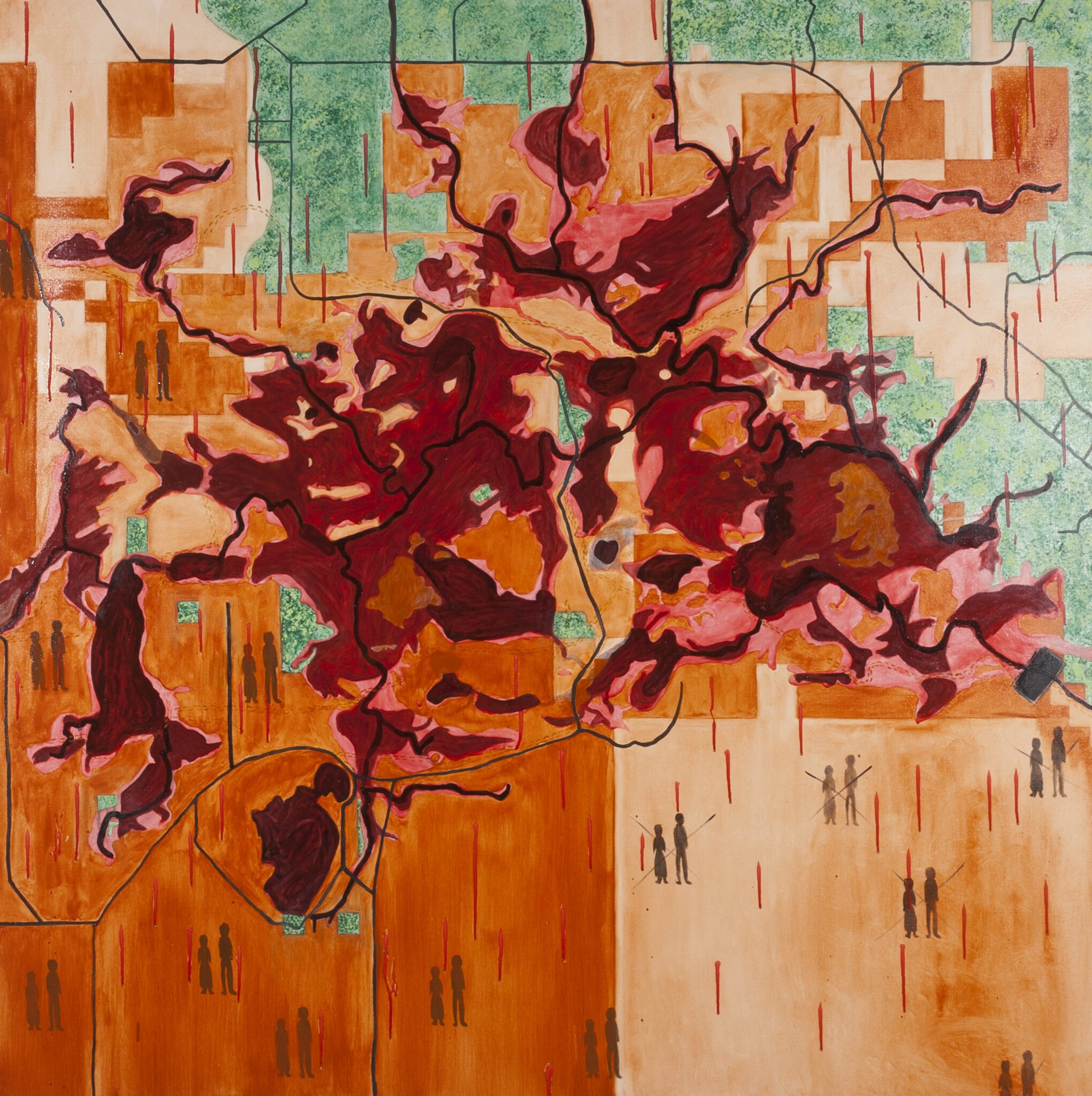In 1980, I took a Zen workshop at the University of Illinois with Professor Shōzō Satō. He was assisted by Kimiko Gunji, who later became my Ikebana teacher. This was a pivotal experience. For five weeks our small group was immersed in three cultural arts of Japan, calligraphy, ikebana and tea ceremony. Later, I took more calligraphy classes with Professor Sato at Japan House. What has remained with me is the power of holding intention when approaching my work. This does not mean that I determine ahead of time what my work will look like when finished. In the practice of Japanese calligraphy, one empties oneself of random thoughts and then focuses on the intrinsic meaning of the pictograph to be painted. Likewise, I consider the feeling or tone I seek in my work before I begin.
In my work I am investigating relationships through the lens of cause and effect. My aim is to explore how we come to resolution from the decisions that we make and the actions that we take. On a functional level as an artist, my process embodies this idea. Initially, I work freely and spontaneously and move steadily towards resolution by layers of intuitive decision making, embracing happy accidents.
I am interested in how a viewer’s perceptions make meaning from a work of art. The book by neuroscientist, Eric R. Kandel, Reductionism in Art and Brain Science, has impacted my understanding of the ways the brain functions to interpret art differently, depending if the subject is recognizable or abstract. Abstract or non-objective art engages a part of the brain associated with memory and emotions. This promotes deeper self-reflection. Appreciating this has prompted me to explore new ways to connect more deeply with viewers of my work.


